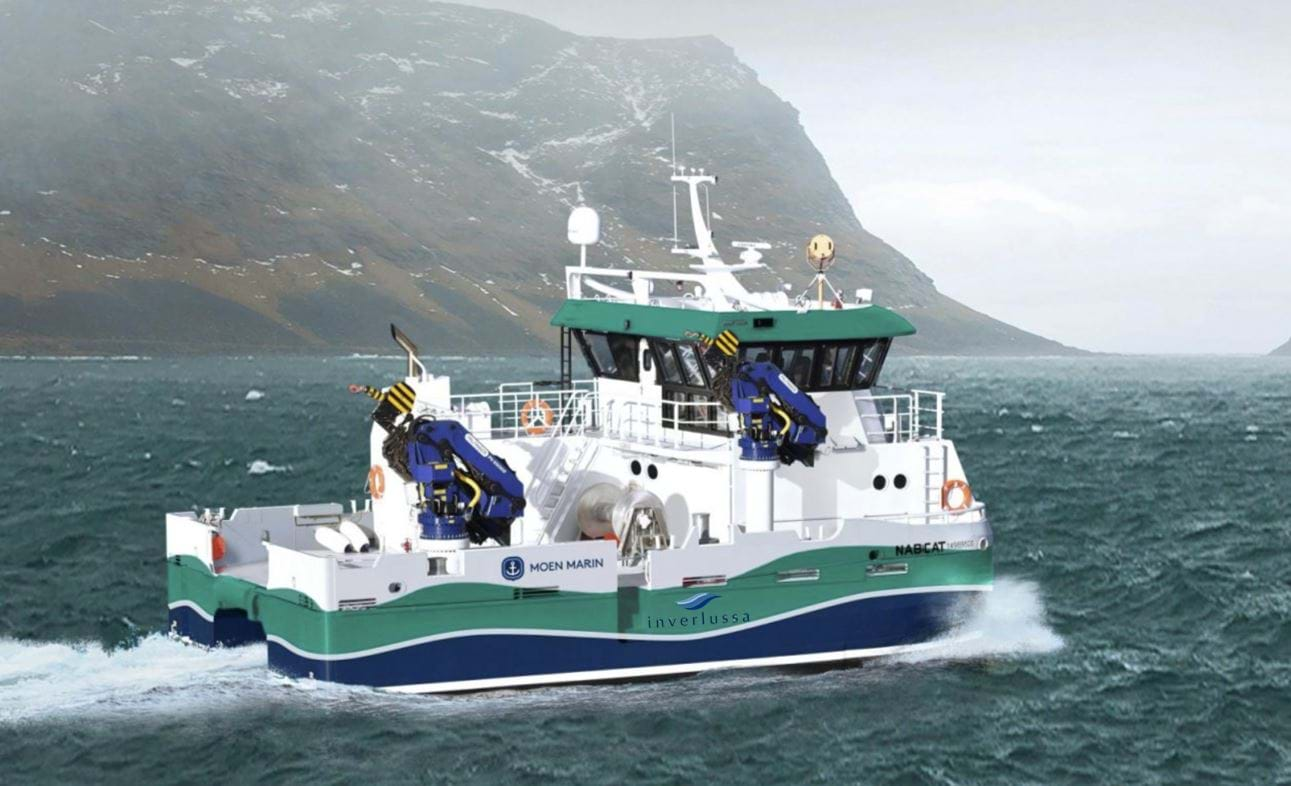Inverlussa launch the UK’s first full hybrid aquaculture vessel
Adoption of new technologies can play an important role in minimising direct greenhouse gas emissions. Inverlussa Marine Services, based on the Isle of Mull in Scotland, has recently taken delivery of the UK’s first full-hybrid aquaculture service vessel which will reduce both running costs and carbon emissions.
Inverlussa Marine Services supplies vessels and crews to operate and maintain aquaculture sites on the west coast of Scotland. In a move away from traditional diesel engines the business has already invested in a diesel-electric vessel, the Camilla Eslea, which launched in July 2021 and in September 2021 launched the Laurence Knight, a fully-hybrid vessel.
This new build marks an important milestone in industry efforts to improve efficiency and reduce carbon emissions.

Why adopt hybrid technology?
As a business we want to be an industry leader, and that means constantly exploring new technologies. We work closely with shipyards around Europe to stay at the forefront of vessel design and started discussions with Moen Marine in Norway about a hybrid vessel. There are hybrid vessels already in use in Norway and we wanted to bring the first hybrid vessel to Scotland.
The new 15m NabCat vessel, which is powered by a combination of diesel and batteries, will undertake general aquaculture sitework and maintenance at sites on the west coast of Scotland.
As a business we want to build a reputation as a leading and forward-thinking contractor in the Scottish aquaculture sector. Our clients also have their own sustainability and emission targets and expectations from the new vessels they charter. This new hybrid vessel ticks all the boxes.
The vessel can either be plugged in and charged using shore power or onboard generators can self-charge the vessels batteries whilst at sea. The battery pack allows the vessel to operate on site for up to 6 hours carrying out general site work with zero emissions. It also means that no overnight generators are required which reduces fuel consumption and associated greenhouse gas emissions. The vessel will also create less noise pollution which makes life much more comfortable for the crew onboard and surrounding communities.
Aquaculture work is particularly well suited to using hybrid vessels. Unlike commercial fishing or supply vessels which may need to make long journeys offshore, aquaculture service vessels often spend a lot of time inshore, working on a specific site. Hybrid engines are much more efficient for this type of work and can deal with surges of high-power demands such as crane use without the need for engines to rev up. The fact that the vessel also comes back to a harbour at night means they can be plugged in to charge the onboard batteries.
Economic and environmental benefits
Whilst the initial cost of designing and building a brand-new hybrid vessel is higher than that of a traditional diesel engine vessel, the environmental and economic benefits are clear.
Based on data from the builder we expect the vessel to use around one third less fuel each year than a diesel vessel, that represents a saving of almost 90,000 litres of fuel a year. This equates to a reduction in equivalent carbon dioxide emissions of over 234 tonnes per year compared to a traditional diesel service vessel.
That financial saving on fuel is passed directly to the client. Fuel is one of the biggest running costs for a service vessel so there is a significant economic benefit as well as being more environmentally friendly.
As consumer awareness about the environmental impact of food supply chains increases adoption of new technologies, such as the hybrid vessel built by Inverlussa, represents an important step for the seafood industry. Early adoption of new technology to reduce greenhouse gas emissions helps the sector build on its reputation as a healthy, low-impact, and environmentally sustainable source of food.
Further information on this topic can be found by accessing the link below.